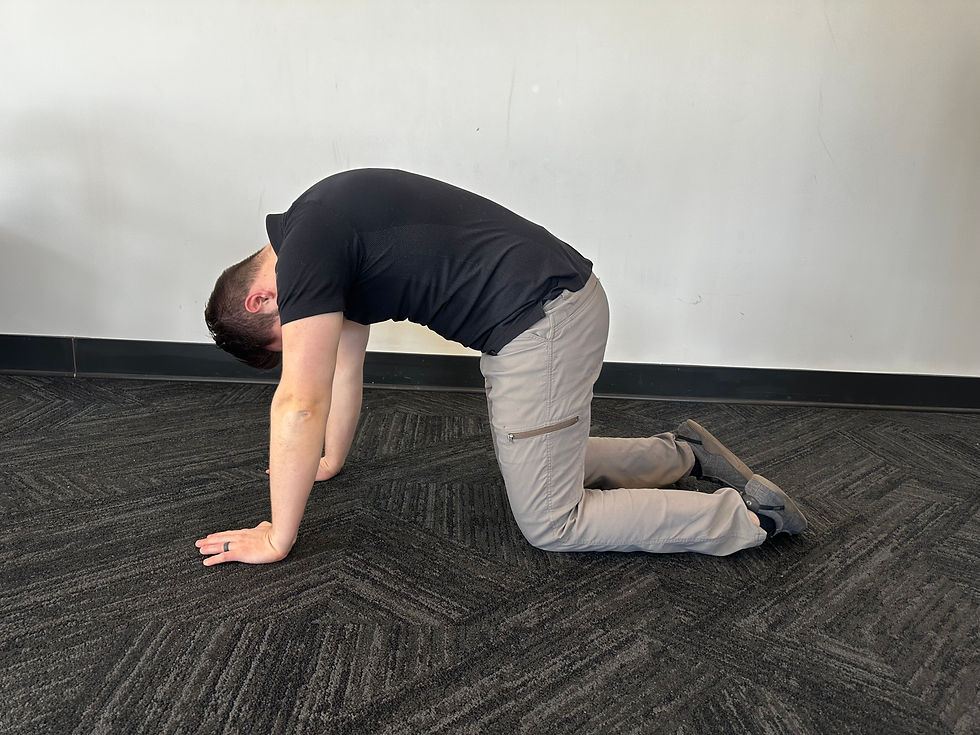Wall Angels Exercise
- Benjamin Mishleau
- Feb 3
- 2 min read
Updated: Feb 19
The wall angels exercise has roots in physical therapy and rehabilitation, where it was used to help individuals improve shoulder mobility, posture, and thoracic spine flexibility. It was initially popularized as a tool to combat the effects of poor posture, especially for individuals with rounded shoulders or those experiencing muscle imbalances from sedentary lifestyles. Over time, Wall Angels gained recognition in strength training and athletic conditioning programs due to their ability to target multiple muscle groups in the upper body, promoting scapular stability and core engagement.
Purpose: Improve shoulder health, posture, and upper back stability. This movement helps counteract the effects of poor posture, particularly from prolonged sitting or slouching, and enhances shoulder mobility, scapular control, and thoracic spine flexibility.
Targeted Areas: Deltoids and rotator cuff muscles (shoulders), trapezius, rhomboids, serratus anterior, and thoracic spine.
Instructions:
Stand with your back against a wall, feet about 6–12 inches away, and lower back, upper back, and head gently touching the wall.
Raise your arms to a goalpost position (90-degree bend at the elbows) with your hands, elbows, and shoulders touching the wall.
Slowly raise your arms overhead while keeping them in slight contact with the wall, then lower them back to the starting position.
Perform 10–15 reps for 2–3 sets, focusing on controlled movement and full range of motion.
Tips:
Engage your core to prevent excessive arching in the lower back.
Avoid rushing through reps; focus on smooth, intentional movement.
If keeping your arms against the wall is too difficult, perform the movement with your arms slightly forward from the wall.
Who Should Do Wall Angels:
Individuals with Poor Posture – Excellent for those with rounded shoulders or upper back tightness from prolonged sitting.
Athletes and Weightlifters – Helps improve shoulder mobility, scapular control, and upper back strength for better performance in overhead movements.
People with Shoulder Impingement or Instability (with clearance) – Can be helpful for rehabilitation, as it promotes proper scapular movement and improves shoulder function.
Office Workers and Those with Sedentary Lifestyles – Ideal for counteracting the effects of slouching and promoting thoracic extension.
Individuals Seeking to Improve Shoulder and Upper Back Mobility – Strengthens the serratus anterior, rhomboids, and traps, which are key for shoulder health and posture.
Prevention of Future Injuries – A great prehab exercise for people looking to maintain healthy shoulders and upper back.
Who Shouldn’t Do Wall Angels:
Individuals with Severe Shoulder Injuries – Those with rotator cuff tears, shoulder impingement, or severe instability should avoid or modify the exercise until cleared by a healthcare provider.
People with Limited Shoulder Mobility – If you cannot maintain contact between your arms and the wall without pain or discomfort, try a modified range of motion.
Those with Lower Back Pain – If the exercise causes discomfort in the lower back, it may indicate excessive arching or a need for core engagement; modifications may be necessary.
If It Causes Pain: If in doubt, if it causes pain, don't do it.











Comments